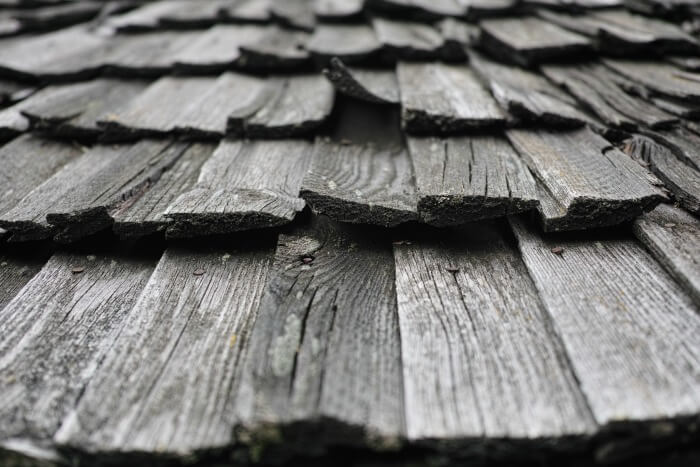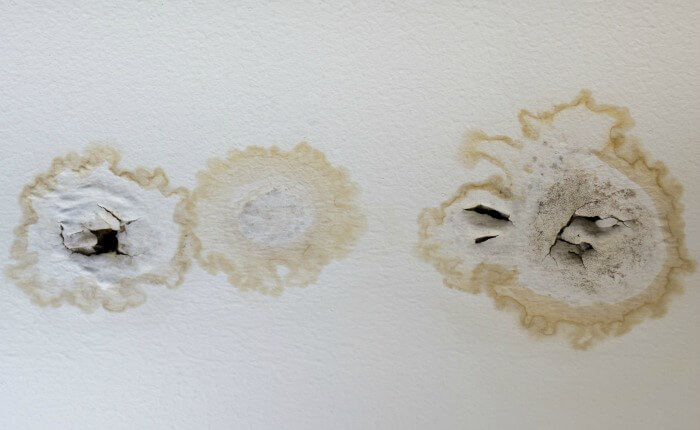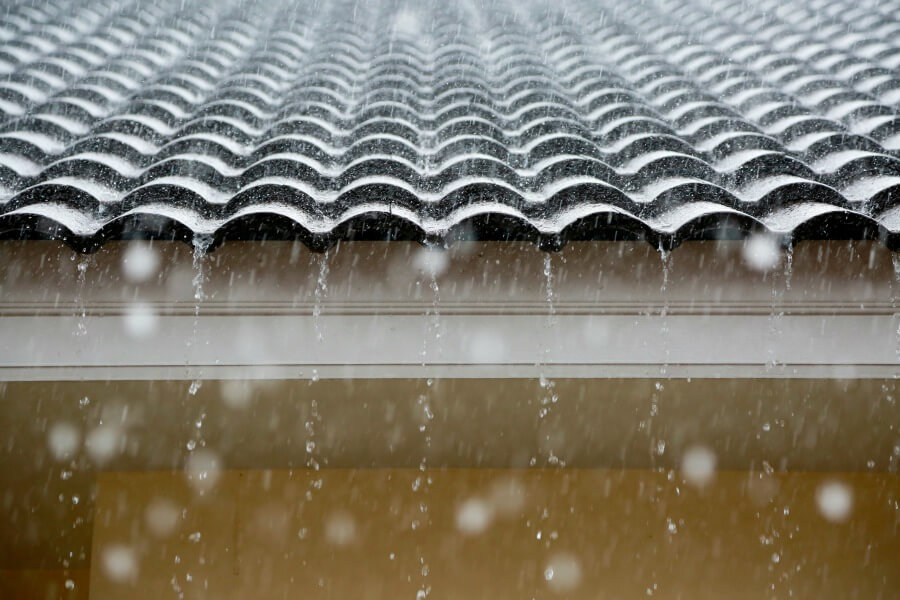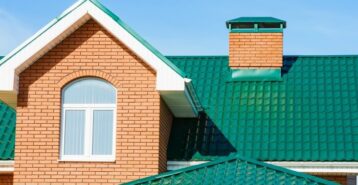Are you doing a roofing project?
Modernize can pair you with three to four pros in your area, so you can compare options and save time and money.
Modernize homeowner surveys have consistently shown that homeowners with damage to their roofs are more stressed than homeowners seeking any other kind of home repair. There’s good reason for that: Your roof protects you and your most valuable belongings from the worst weather. If you fall into this category, you are not alone. In this article, we will show you how to find damage to your roof that may have occurred during a storm and lay out options for what to do about it. If you already know where your damage is, you may instead want to read about how to hire a roofing contractor. In any case, you will also want to ensure you stay ahead of money-related stress as much as is possible by knowing how to file a roofing claim with your insurance company. If you’re trying to spot signs of roofing damage, then read on.
Roofs are designed to weather the elements, but during a severe storm, your home may be damaged by wind, hail, or debris. But this roof damage is not always easy to see.
It’s important for homeowners to be able to identify roof damage, so you can quickly restore your home’s privacy, safety, and comfort. If left untreated, your home can suffer structural damage.
If you have recently experienced severe weather, you may see your neighbors repairing their roofs, or speaking with insurance adjusters in your area. Learn to spot signs of damage and take action, if needed.
Stay Safe and Assess Storm Damage
Before inspecting the exterior of your home for damage, make sure the storm has passed and it is safe to be outside. If you see downed power lines, electrical hazards, or flooding, keep away from the area and immediately call 911.
Even if the coast is clear, continue to be aware of potential hazards— especially on or near your roof. This is often the most dangerous place for post-storm damage as it can cause structural issues and is out of your line of vision. Check for fallen trees or heavy debris, loose or broken shingles, and ice dams if it’s a winter storm.
Detect Signs of Roof Damage from Hail
Hail damage is easy to detect. You will hear hail hitting your roof and windows, and you will see pellets of ice gathering on the ground. Hail damage is also usually easy to see— it can dent your siding or even shatter your windows. Hail can also dent your roof or tear away shingles.
Hail damage usually causes the following damage to your home’s roof:
- Missing Shingles: Look for gaps in the pattern or pieces of exposed roof. You may also see shingles on the ground near your home.
- Damaged Shingles: Check for shingles on your roof that are curled, buckling, dented, or cracked.
- Build-up in gutters and downspouts that have collected loose asphalt granules.
Flashing and downspouts that are dented, hanging, or missing.

Check for Signs of Wind Damage
High wind speeds have the potential to knock over trees, shatter windows, and damage roofs. If shingles are blown away, the roof deck or underlayment is left exposed to the elements. This leaves your home even more vulnerable to water damage.
After a heavy windstorm, check on the exterior of your home for the following:
- Damage depending on your roof type:
- All Shingle Roofs: Missing, cracked, or curling shingles
- Composition Shingles: Granule buildup in gutters
- Wood Shingles or Shakes: Rotting and mold
- Flat Roofs: Cracks, tears, or surface bubbles/wrinkles
-
- Damage to roof support or accents:
- Flashing: Tears or buckling
- Roofing Cement: Loose or crumbling cement
- Gutters and Downspout: Rust, rot, or missing and dented sections
- Chimneys: Loose or crumbling brick
- Damage to roof support or accents:
Look for Signs of Water Damage
Missing or broken shingles from hail and wind damage can be quickly identified, but the effects of water damage can take longer to detect. Untreated water damage and leaks can lead to mold, which can affect your home’s foundation and structure.
Here are the most important places to check for signs of flooding, leakage, and general storm damage:
Find the Right Contractor for Your Roofing Project
Whether you’re ready to begin your project now or need some expert advice, our network of contractors are here to help. With a few simple questions, we’ll find the best local professionals for you
- Gutters: Check here for water buildup. If water isn’t being redirected properly, it can pool next to your home and create mold and damage to the structure.
- Ceilings: Check for water spots and yellow, copper, or brown discoloration.
- Walls: Inspect for signs of cracking, peeling, or bubbling in the paint or wallpaper.
- Check your attic, basement, and crawl spaces for mold or wood rot and leaks. This can reveal itself as a musty smell, which can occur as soon as 24-48 hours after a storm.
- Flooring: Look for gaps or curling floorboards, sagging wood that feels soft to the touch, or expansion in wood and laminate floors Expansion occurs when the materials become waterlogged.
- Roof: Cracked, curled, or missing shingles.
- Windows: Look for moisture buildup (fog) between glass panes.
-

Contact Your Insurance and a Find a Roofing Contractor
If you detect any of the damage above, it’s important to contact your homeowners insurance and find a roofing contractor to help stop future damage and repair your home.
1. Document the damage
Before you touch anything, take detailed notes and multiple photos of all damage to the area— both interior and exterior. This documentation will be important when you submit your insurance claim.
2. Safe-proof potential hazards
Cover or board up any windows with shattered or jagged glass. Next, cordon off any areas that could be a danger.
3. Submit your claim
The next step is to report the damages to your insurance company as soon as possible.
Time is of the essence when submitting a claim. Insurance companies have a limit of filing claims within one year of the damage. It is best to contact your insurance company by phone, as well as email.
Document all your contact in a folder to help keep conversations, details, and dates organized. Submit your photo documentation and any receipts you’ve incurred along the way (for example, proof of your housing if the storm made your home temporarily uninhabitable).
4. Make an appointment with an insurance adjuster
The insurance company will arrange an appointment for an adjuster to come out to your home and assess the roof damage. It is very important that you get three to four contractor estimates before you meet with the adjuster so that you have a professional benchmark for the project cost. Make sure your appointment with the adjuster will give you enough time to get contractor estimates first.
5. Get in touch with a trusted roofing contractor
Now it’s time to contact a few trusted contractors. They will assess the repair or roof replacement cost and offer complimentary project quotes that you’ll give to your claims adjuster at your appointment. Most contractors have experience with storm-damaged homes, so it’s wise to ask your contractor to be present to make sure you get a fair assessment.
Modernize now offers homeowners a free digital Contractor Checklist as a simple step-by-step guide to assist with your windows project. Access the interactive contractor checklist by visiting the Modernize Homeowner Portal (Log in using the link provided in your email) or download it here.
6. Replace or repair
Depending on the severity of the damage, your contractor will suggest either a roof repair or roof replacement. Any changes in the original estimate should be recorded in writing. The project is finished after it has passed a city inspection and you’re satisfied with the completed work to your home’s roof.
Find the Right Contractor for Your Roofing Project
Whether you’re ready to begin your project now or need some expert advice, our network of contractors are here to help. With a few simple questions, we’ll find the best local professionals for you
Reviews from Real Homeowners
Welcome to Homeowner Resources! We are the Modernize blog. Modernize pairs more than 3 million homeowners a year with pre-vetted contractors in their area. This blog started because we believe homeowners should know everything about their homes, from how their HVAC works to which front door colors they might love. On Homeowner Resources, you can find information on every part of your home, right down to how you can negotiate with contractors to get the best price. Here's more about the blog.
Need a contractor? Learn more about how Modernize finds the right pro for you.






